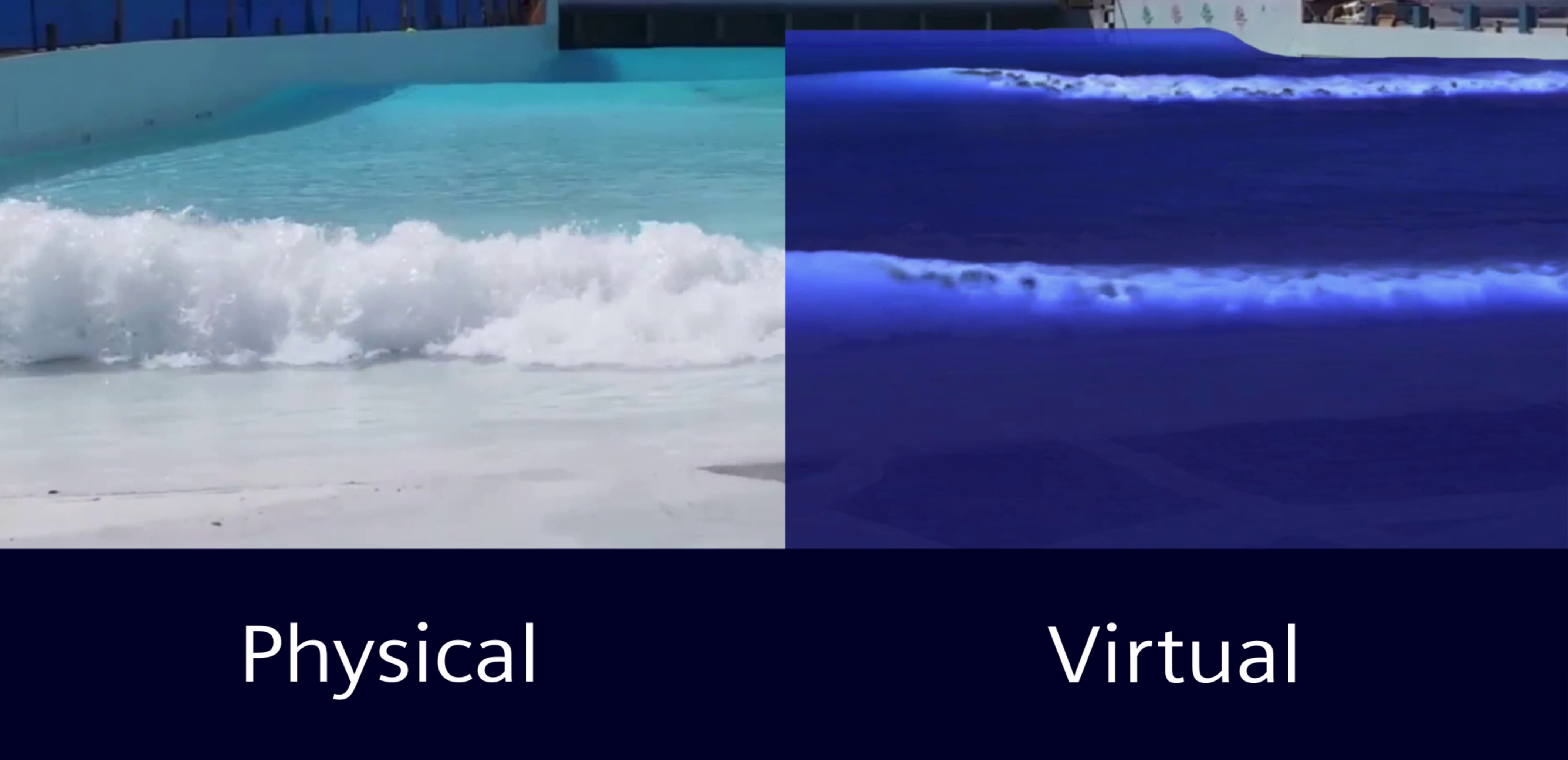Part 2: How do you create a digital twin of an ocean wave?

In part one of our Surf Loch series, How do you create a surfer’s perfect wave?, we discussed how Surf Loch’s founder and his team of engineers desired to replicate real ocean waves in a pool in both scope and feel.
How does Surf Loch re-create the perfect ocean waves in a wave pool? They embraced digital transformation while always having the experience of their customers in mind.
Tom Lochtefeld, Surf Loch’s CEO, says: “Making the perfect wave requires an astounding amount of calculation. Siemens’ Xcelerator portfolio gives us this capability. We leverage the world’s most comprehensive digital twin within an ecosystem of technology suppliers and equipment providers. This ecosystem allows us to create repeatable waves that all surfer will enjoy.”
By combining the real and digital worlds, Surf Loch created a digital twin of their wave before testing it in their facility. They found that the virtual model they generated in the 3D world and the physical wave were identical. Lochtefeld adds, “Comparing the real and digital models, we found that both wave trends correlated almost perfectly.”
Surf Loch was able to create different wave variants and ensure that they felt like surfing on the ocean. In addition, the engineers at Surf Loch use Siemens’ simulation technologies for airflow and strength analysis of the big pneumatic fans in the caissons, the structures through which the water comes through.
“In some cases, we build a physical model of what we believe to be true. But as we get better at our digital modelling, we gain a lot of confidence in the fact that what we are seeing on the screen is real,” Steve Hovey, Chief Engineer at Surf Loch, says.
In order to operate multiple sites around the globe, Surf Loch also needed a cloud-enabled collaboration platform. Bryan Behr from the Surf Loch team says, “Every time we start a new project, we are utilizing Teamcenter. The biggest benefit is that we have a central location from where all data is managed.” This means vendors, partners and the Surf Loch team can revise designs collaboratively in real time.
As soon as Surf Loch wave pools get popular and their number across the world increases, Surf Loch is planning to monitor them closely, remotely. The way they’re achieving this is using MindSphere’s IoT technology combined with data monitoring and analytics, in order to control the status of all systems and to perform predictive maintenance.
Michael Brown says, “We measure how the fans, pumps and valves are performing. We can predict when they will start to trend in a bad way, knowing that before they fail is very important because we can schedule a maintenance service without having the client or the customer lose waves. To know the status and health of the system is very important because pool operation can’t stop — everyone wants to surf.”
This concludes part two in our series. In Part 3: How do you customize waves for both first time riders and pro surfers?, we’ll take a look at how the technological capabilities to personalize ocean waves in a pool based on a rider’s skill level can advance the sport.
Want to learn more about the comprehensive digital twin as part of the Siemens Xcelerator portfolio? Click here.